
Privacy Policy | Terms and Conditions | Disclosure Statement | License Policy
COPYRIGHT © 2024 | NUMBER 8 COOKING | ALL RIGHTS RESERVED.

The Art Of Food Presentation — Plating Like A Pro
- Shannon The Helpful Chef
- November 9, 2023
I’ve learned that food presentation is just as important as taste. When it comes to creating memorable dishes that wow customers. While taste is paramount, how the food looks on the plate is almost equally as important.
The visual presentation delights customers’ eyes before they even take their first bite. An artful presentation demonstrates care, creativity, and skill. It can turn an enjoyable meal into an unforgettable dining experience.
ADVERTISEMENT CONTENT BELOW
In this blog post, I’ll share my tips and tricks for plating and presenting dishes. I’ve been a chef for 20-plus years and have learned a thing or two about plating food. Master these techniques to wow patrons and create Instagram-worthy culinary artwork with every meal.
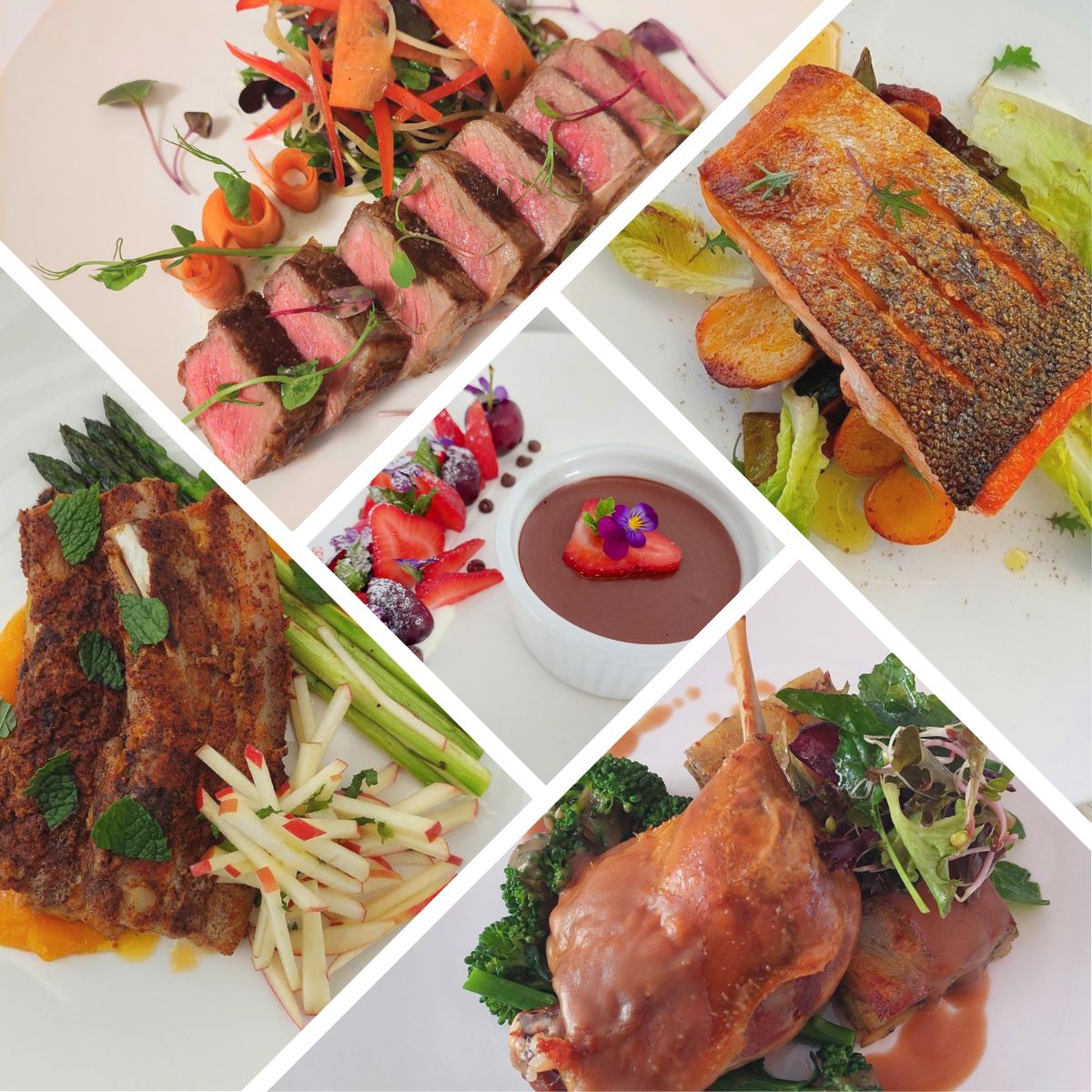
Food Presentation Plating Like A Pro
Throughout my career as a chef, I’ve come to view each plate as a blank canvas. Waiting to be turned into an edible work of art. While the flavors and textures of a dish are crucial, elegant, and enticing.
The presentation takes the meal to the next level, delighting customers and showing them you’ve put care into every component. As any successful chef knows, food presentation and plating skills are well worth developing .
Start With Quality Ingredients
Truly, exceptional ingredients make the job easier. The freshest, properly butchered proteins and peak seasonal produce. They showcase their natural beauty with minimal preparation required. While technique is important, sourcing the best seasonal ingredients gives you an advantage.
Focus on Color And Contrast
One of the keys to eye-catching presentations is playing with vibrant colors and bold contrasts. I like to feature ingredients with bright natural hues like:
- Deep Greens — Spinach, arugula, fresh herbs, lettuce leaves, zucchini, fresh peas, and green beans.
- Rich Reds — Fresh tomatoes, red bell peppers, English radishes, red beets, radicchio, red leaf lettuce, and sliced red meats cooked med-rare.
- Sunny Yellows — Squash, yellow zucchini, golden beets, corn, and yellow beans.
- Earthy Browns — Mushrooms, jacket potatoes, taro, Jerusalem artichokes, and seared or slow-cooked meats.
Contrasting colors help each component stand out. For example, I’ll place a seared med rare red meat like beef rump next to arugula or roasted potatoes to make both stand out. Varying colors excite the eyes and spark joy on the plate.
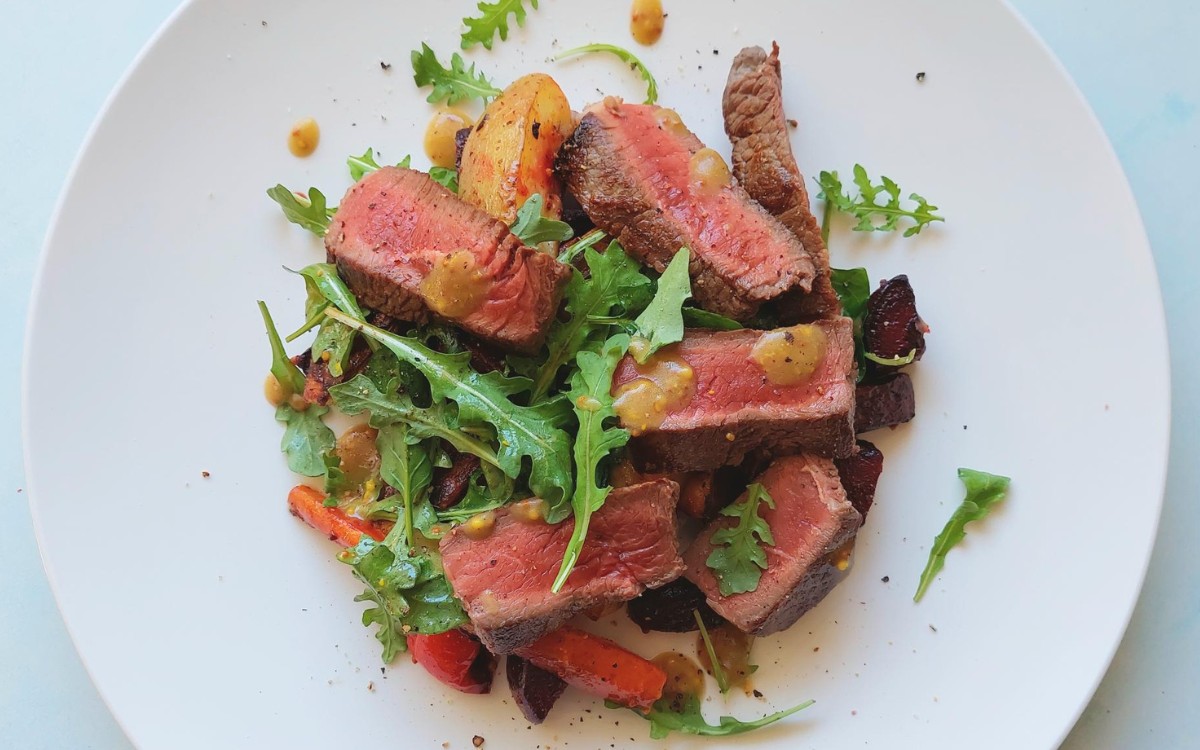
Chefs Pro Tip — Use colorful ingredients to your advantage. Don’t complicate the process, when preparing each ingredient keep it fresh and simple. You will be amazed at what plating designs you can create.
Find Inspiration In Nature
I find endless inspiration for plating designs by observing the visual beauty inherent in nature. Notice compositions like seashell spirals, patterns in flower petals, or leaves fanned on a platter. Mimicking nature’s artistry through food is a constant source of ideas.
Allow Simplicity To Shine
Sometimes simple is best if I don’t overcomplicate a presentation . When the star ingredients speak for themselves. A pristinely seared fillet of salmon needs little more than an herb oil drizzle and chive garnish to impress. Allow quality ingredients and elegant simplicity to shine when appropriate.
Draw Plating Inspiration From Anywhere
I find plating inspiration almost everywhere. Nature, artwork, and even well-designed retail displays. Study what paints a pleasing visual picture and think about how to replicate it on the plate. Inspiration is endless for those with observant, creative eyes.
Pay Attention To Shapes And Height
When conceptualizing a dish, I always consider the natural shapes and heights of each element I’m including. Mixing and balancing the shapes and vertical dimensions makes the presentation more dynamic.
For instance, balls of zucchini are cut using a melon baller. Potatoes are cut into rectangular shapes. Spears of grilled asparagus can provide vertical lines next to rounded potato rosti. Or combine the height of a vegetable salad with the low profile of a sliced seared beef. Defining individual shapes gives a satisfying composition.
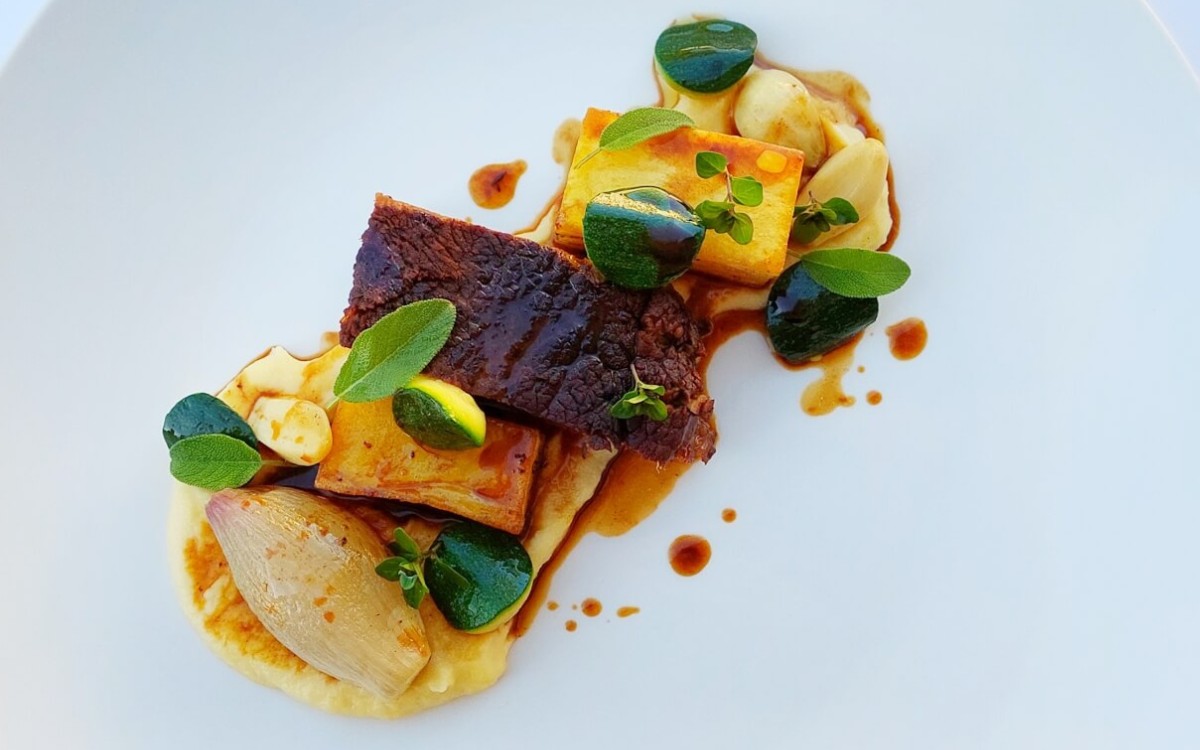
Food Presentation Go Vertical
Height adds drama and excitement to plated dishes. I build upwards with stacked ingredients like potato gratin, blanched broccolini, and a confit duck leg placed on top. Salads become more dynamic when ingredients are arranged vertically rather than tossed haphazardly across the plate. Reaching upwards with towers and heights naturally draws the diner’s eye in.
Incorporate Odd Numbers
When garnishing and portioning ingredients. Odd numbers do wonders when it comes to food presentation. Artful plating incorporates variety. Odd numbers of components like three ravioli or five haricots verts are more interesting than even pairs. The unevenness creates movement and delights the eye as it flows across the plate.
Play With Proportions
I carefully consider proportion when food presentation is the focus. The star of the dish is featured prominently with supporting sides artfully framed around. For example, an ample tenderloin takes center stage while the potatoes and vegetables are thoughtfully portioned as accents. Getting the proportions just right ensures an ideal bite each time.
Leave Negative Space
Don’t overcrowd or clutter the plate. I remind myself to leave ample negative space between the ingredients and leading up to the edges of plates and dishes. Negative space focuses the diner’s attention exactly where you want it. It also allows you to thoughtfully frame each component within the surrounding clean plate.
Consider Texture Contrasts
Beyond colors and shapes, textures add tactile variety and entice the appetite. I purposely pair contrasting textures like the juiciness of fresh tomato against the creaminess of mashed potatoes. A crispy crystalized chicken skin is another favorite. Varying textures excite both the palate and presentation.
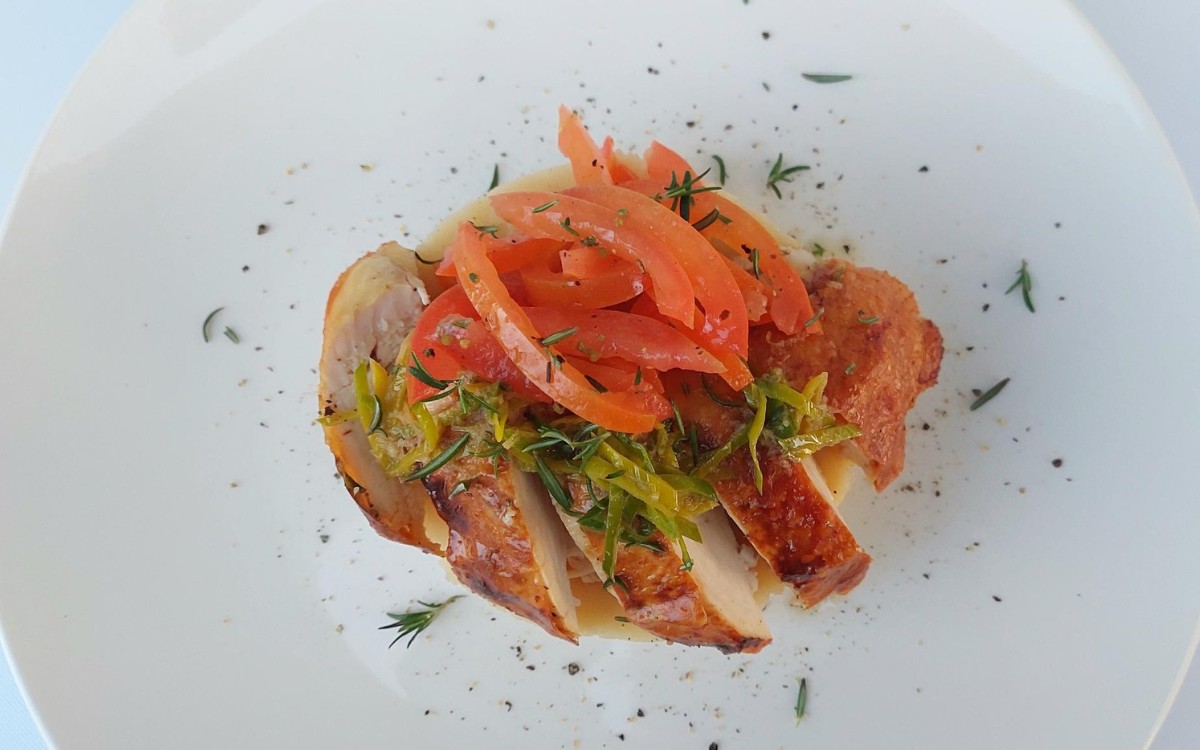
Drizzle With Intent
One of my favorite plating techniques is taking advantage of the beautiful trail left when sauces and vinaigrettes are artfully drizzled onto the plate. I get creative with smears, straight lines, dots, and other patterns to adorn proteins or seasonal vegetables. Drizzling brings elegance through both taste and presentation.
Garnish With A Purpose
No plated dish is complete without a perfect garnish. Sprigs of fresh herbs, edible flowers, chopped nuts, and microgreens. These are my go-to garnishes to provide the final touch. I carefully select and position garnishes to complement other components. This is like a frame that completes a painting. This thoughtful detail finishes the food presentation.
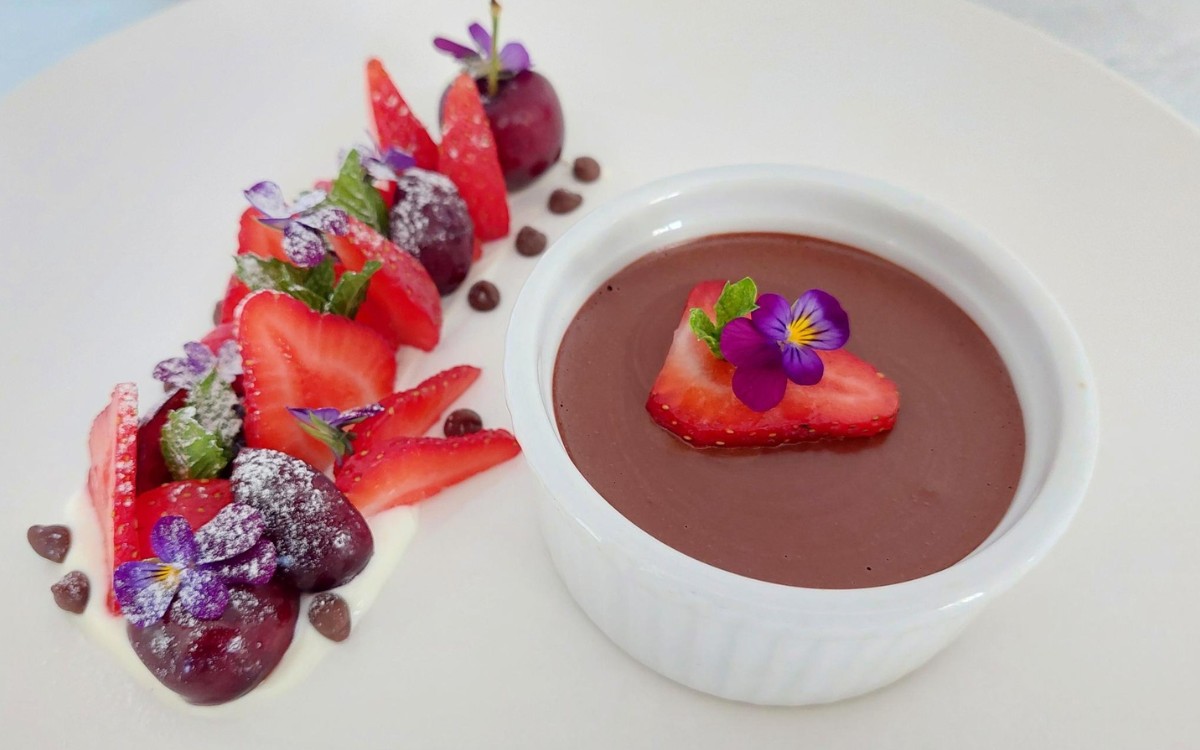
Use Plating To Tell A Story
In my view, the best plating tells a thoughtful story. The ingredients, flavors, and preparation involved in crafting the meal are conveyed through a harmonious arrangement. Seasonality and passion come across in the details. This storytelling instills pride and attention to detail in my cooking.
Experiment With Plate Styles
An often overlooked plating tip is choosing plates, boards, and surfaces that complement the food. Patterns on plates can frame simply presented dishes. Wooden boards offer rustic charm while sleek slate can modernize a presentation. I get creative with my “canvas” to enhance the overall dining experience.
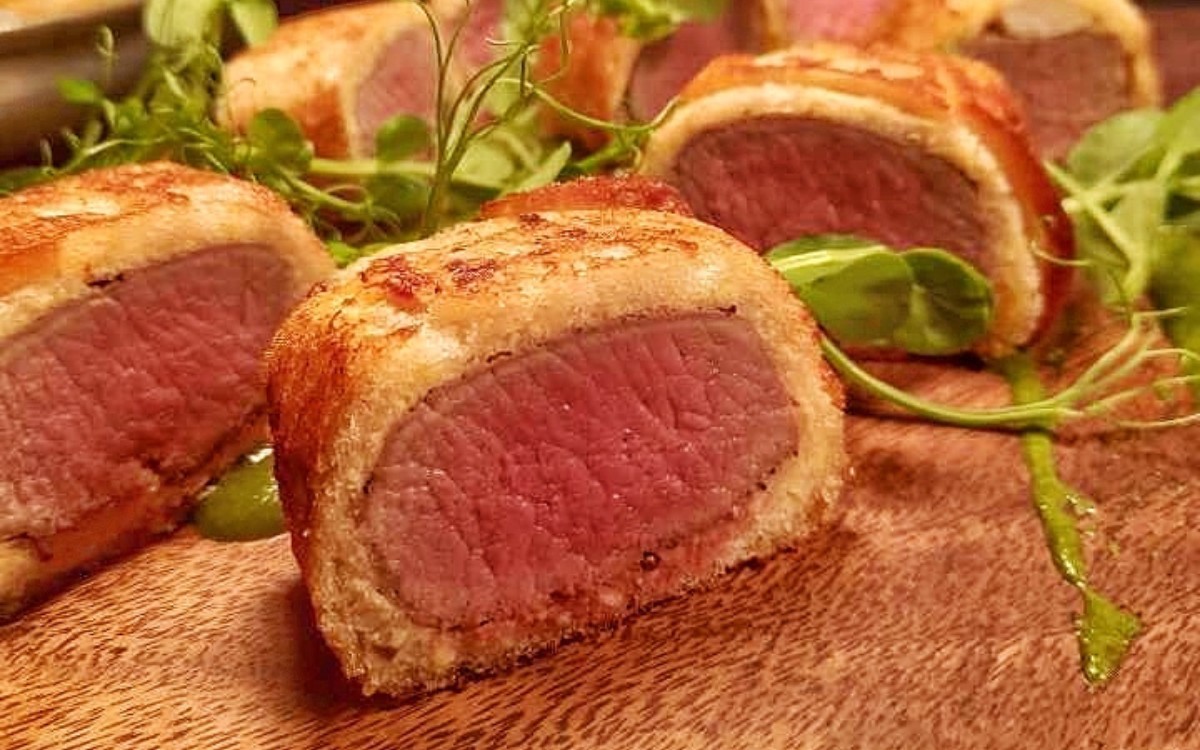
Develop Your Own Style
Just like with cooking techniques, plating has recognizable styles. Find what you love by looking at inspirational photos and experimenting. Over time, my personal plating preferences emerged into my signature style. Then I refined and perfected it. Maybe you prefer minimalist plates or architectural presentations. Your unique style is part of the art.
Practice Plating At Home
Even during home-cooked family meals, I practice plating in ways that feel fun and creative. The more you deliberately compose dishes with care, the more second nature beautiful presentation becomes. Use low-stakes at-home meals to hone your skills.
Invest In Quality Tools
Having quality tools at your fingertips facilitates plating success. I recommend investing in small spoons, tweezers, squeeze bottles, a melon baller, and other specialty items. The right kitchen tools allow you to intricately stack, drizzle, and embellish with ease. They’re essential for every aspiring platter.
Helpful Resources
- Chef’s Non-Negotiables That Separate the Amateurs from the Pros
- A Beginner’s Guide To Kitchen Slang Culinary Lingo All Aspiring Chefs And Cooks Should Know
- A Day In The Life Of A Chef Knives Fire And Passion
- Sourcing Seasonal Ingredients To Inspire Your Home Cooking
What Are Some Basic Plating Tips For Beginners To Improve Presentation?
Some basic plating tips are to start with evenly portioning ingredients. Use odd numbers for garnish. Use height to add dimension, and incorporate contrasting colors and textures. Leave negative space around components, and pay attention to the plate style. Even simple improvements can make a difference.
What Are Common Plating Mistakes To Avoid?
Here are some of the common plating mistakes to avoid. Crowding the plate, not leaving negative space. Lack of color contrast, sloppy or uneven drizzles. Overcomplicating the presentation, and poor proportions that don’t highlight the star ingredient.
A common mistake I see when cooks are plating food is the lack of height. They place everything on the plate which makes the dish look one-dimensional and boring. Another common mistake I see is minimal to no garnishes.
How Do I Come Up With Unique Plating Ideas?
Ways of coming up with unique plating ideas are drawing inspiration from nature, artwork, and other chef’s plating ideas. Also, telling a story about the dish’s flavor profiles can guide the presentation.
Final Thoughts
Perfectly executed taste with artful presentation creates a sensational dining experience. Mastering plating techniques demonstrates a passion for food and visual aesthetics that diners notice and appreciate.
I encourage all cooks and chefs to view every plate as a new opportunity to create food into an artistic showpiece. With practice, you can learn to plate dishes as skillfully as you craft the flavors. Turn every meal into a visually stunning culinary delight for patrons.
Skillful food presentation makes for an exciting dining experience. It touches all your senses and demonstrates the care and creativity the chef has put into the food. Food presentation it’s easier than you think.
You May Also Like This
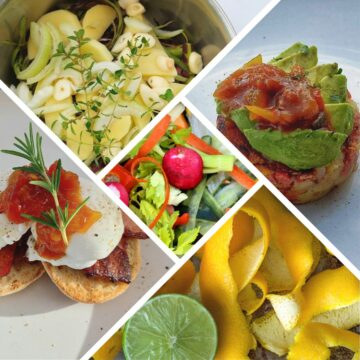
18 Simple Cooking Tips — Zero Waste Turning Scraps into Culinary Gold
- September 2, 2023
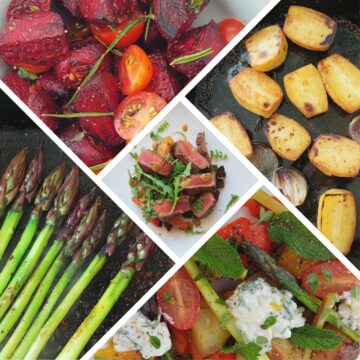
12 Ways How To Be A Better Cook Beginner’s Guide
- January 30, 2024

A Chef’s Guide To Choosing Cookware Right For You, From Pots And Pans To Perfection
- February 7, 2024

Coming Back From Culinary Failure: A Painful Lesson And Fantastic Teacher
- February 13, 2024

Food Presentation 101: The Art of Plating and Garnishing by a Personal Chef
- October 20, 2023
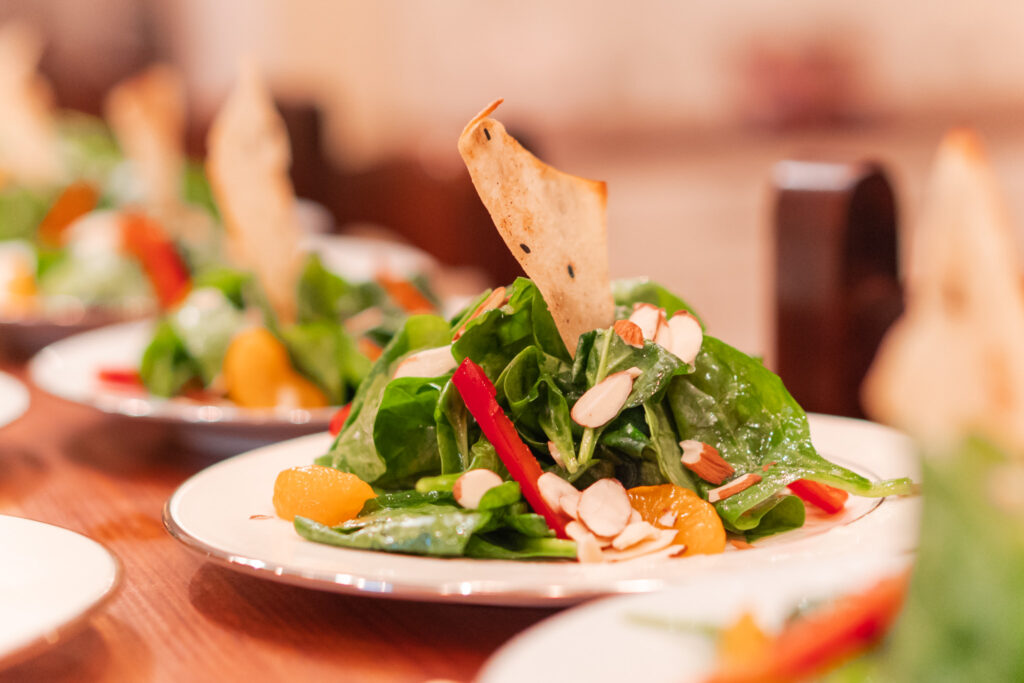
The visual appeal of a dish is just as important as its taste. Presentation plays a significant role in how we perceive and enjoy food. Personal chefs are masters in the art of plating and garnishing, using creative techniques to transform a meal into a visually stunning masterpiece. In this blog post, we’ll dive into the fundamentals of food presentation and explore how a personal chef’s expertise can elevate your dining experience.
1. The Importance of Food Presentation
Food presentation is the first impression your meal makes on the senses. A beautifully plated dish entices the eyes, creating anticipation and setting the stage for an exceptional dining experience. The way a dish is presented can enhance flavors, highlight key ingredients, and elevate the overall enjoyment of the meal.
2. Balance and Composition
Personal chefs understand the importance of balance and composition when it comes to food presentation. They consider elements such as color, texture, shape, and height to create visually appealing plates. By artfully arranging components, they strike a harmonious balance that not only pleases the eye but also enhances the dining experience.
3. Artistic Plating Techniques
Personal chefs are skilled in a variety of artistic plating techniques that add flair and creativity to their presentations. From delicate drizzles and intricate sauces to geometric arrangements and layered compositions, they use these techniques to transform a simple dish into a work of art. These techniques showcase their attention to detail and their ability to transform ordinary ingredients into extraordinary presentations.
4. Garnishing with Flair
Garnishes are the finishing touches that complete a plate. Personal chefs use garnishes to add pops of color, texture, and flavor to their creations. From vibrant herb sprigs and edible flowers to crispy toppings and intricate vegetable carvings, garnishes provide a visual and gustatory delight that elevates the overall presentation.
5. Presentation for Special Occasions
Personal chefs excel in creating visually stunning presentations for special occasions and celebratory events. They can design elaborate displays, incorporate decorative elements, and use thematic plating techniques to evoke the desired mood and ambiance. Whether it’s a romantic dinner for two or a grand feast for a milestone celebration, a personal chef’s expertise in food presentation ensures that the dining experience is as memorable as the occasion itself.
Food presentation is an art form, and personal chefs are the artists who bring dishes to life on the plate. Through their mastery of balance, composition, artistic plating techniques, and garnishing with flair, they elevate the visual appeal of meals and create memorable dining experiences. So, indulge your senses, appreciate the artistry, and let a personal chef transform your meals into visual masterpieces that are as delightful to look at as they are to savor.

Tavernay Parkway Charlotte, NC 28262
Office: (980) 216-CHEF
Serving the Charlotte and Triangle areas Raleigh, Durham, and Chapel Hill
COPYRIGHT © 2020 HEART AND SOUL PERSONAL CHEF- ALL RIGHTS RESERVED.

Oders placed on Wednesdays after 6PM (EST) will be shipped the following week (some exceptions may apply for local deliveries in the NYC area).

Item added to your cart
The art of food presentation: tips and techniques.
The art of food presentation goes way beyond garnishing. It's a visual way to introduce the meal's culinary story and give the diners a glimpse of the flavor that awaits them. If you've ever heard the phrase “one eats with his eyes first”, in the culinary world, this statement is unequivocally true. If there's one thing hospitality experts agree on, it's that food presentation is crucial to the entire dining experience.

The aesthetic arrangement of food on the plate is a chef's silent message to the diners, inviting them to savor not just the taste but the culinary journey. If you're finding food presentation difficult, you'll want to read this article to the end, as we will unearth everything you'll need to know to make your food presentation a masterpiece.
Importance of visual appeal in food preparation
Having known that we first eat with our eyes before our mouth, it's a no-brainer why visual appeal is as crucial as the food itself. Here are some reasons why it matters:
Influence diners' perception and acceptance of food
The visual presentation of the food is the first thing guests will notice. A well-presented dish often entices eaters and leaves a memorable first impression. Research has shown that plating food in an aesthetic manner makes diners see the food as more sophisticated and, consequently, are ready to pay more.

Enhanced Appetite
Colors, shapes, and food arrangements can add energy and trigger hunger. Bright colors like red, yellow, and green revive appetite and present food as natural. Also, complementary colors add a visual appeal to the food. When these colors are blended properly, it raises diners' anticipation of the food, and they are ready to eat more. The color of your plateware also highly affects the overall presentation which we will address in this article.
Reflects Quality
The dish's visual appeal speaks volumes about the food preparation, and the level of care to execute the dish. Also the environment where the guest is, the cleanliness of the linens, glassware or silverware, are elements that will tell a lot about the hygiene of the food and venue. Even if it's a high-end restaurant and food is presented in a shabby manner, or the venue is not well looked after, then diners will go with the notion that the dish was prepared in an unsafe environment using low-quality ingredients and that the standards of the venue are low.
Marketing and Social Shares
We are in an age where a simple post on the internet can go viral and gather over a million views in a few hours. Suppose visitors love their food presentation and dining experience. In that case, they are most likely to take pictures of the food or environment to post on their social media handles, which has a high possibility of attracting first-time visitors and repeat customers if the post goes viral. For the hospitality industry, this is earned marketing and low-cost advertising spreading across the social media network.
Techniques to Enhance Food Presentation
Whether you're a professional chef or a home cook, your plating process can make a big difference in how it is received. Here are some top food plating techniques to enhance food presentation:
Landscape plating

Landscape gardeners inspire this style of plating. It comprises long and low placement of food across the plate. It also gives a natural and artistic look to dishes, enhancing the flavor and texture of the ingredients. This style can be used on any dish, both main dish, appetizers, and desserts . To get the best output, cut each item into bite sizes.
Classical plating
It is a traditional and symmetrical plating technique that allows diners to see the elements on the plate vividly. This method uses starch, vegetables, and the main for the food arrangement. You'll have to view your plate like a clock. Protein should be placed between 3 and 9 o'clock, carbohydrates/starch between 9 and 12, and vegetables should be placed between 12 and 3.
Free form plating

The free-form plating allows for a more relaxed and asymmetrical food placement. Unlike the classic plating, where each element has a specific place, the free form allows for creativity. You can use cooking methods like smearing, scattering, or stacking to create a visually appealing dish.
Food on organic material techniques
This food presentation style uses natural materials like wood, stone, and slate as plating devices. It gives a rustic and natural feel to the dishes. You can use this technique for different occasions so long the plating and materials are safe, clean, and suitable for the food.
The bathing technique

The bathing technique presents the main dish in a pool of sauce or broth. This food plating style creates a more flavorful and eye-catching look for your dish and also the texture of the food. You can use the bathing technique for Tortellini with shellfish sauce or for a soup consommé, you can place your vegetables in the bowl and pour the soup broth at the table for a wow effect!
Creative Plating Ideas to Impress Your Guests

Whether you're serving up modest fare or fine cuisine, there's no one way to plate food. However, some important factors must be considered when presenting your food. But the rule of thumb is that the food's taste should match its looks. Here are the top food plating ideas that will help you plate food like a chef.

Tailor plating style to your evening’s concept.
You must give diners a more cohesive experience. Ensure your plating style matches your theme. If you have ethnic and casual dining, a hearty presentation using traditional dishware will be most suitable. For a fine-dining feel, using wares that exude luxury and affluence will be perfect, while for a family-style service, you can aim for colorful large plating. To get the most suitable plating for your party, you'll have to study your theme and guests to know what best fits.
Simplicity is key
One way to ensure simplicity is to pick one ingredient to be the spotlight on the plate. Clutters cause distractions, and most times, diners get confused about where to begin. To get this right, you should incorporate negative space. It will help draw diners' attention to the main element of the dish. Also, ensure that the plate complements the dish. Don't be under pressure to fill up the plate. You'll have to get different plates and proportions for different dishes.
Height and layers
Think of this like a landscape; placing elements at different heights adds depth to grab attention. For example, you can place mashed potatoes as your base and layer a piece of grilled chicken on top, then garnish it with steamed asparagus while standing upright. With this, you'll have starch at the bottom, protein in the middle, and vegetables upwards.

In French cuisine, the selection of tableware is vital to the overall presentation of the dish. Carefully choose plates, bowls, and platters that not only match but elevate the aesthetic qualities of the food. The design of the tableware is often minimalistic, directing attention squarely on the culinary creation itself. For your tablewares you can use white or light shades; they'll blend well with garnishes and sauces.
Use suitable tools
Using the right tools is crucial when plating food. It helps elevate the presentation of your dish to match the effort you've put into the meal preparation. Some of the common tools you'll need include a precision spoon, sauce squeeze bottle, tweezer, brush, round cutters, and spatula. These tools allow for greater control and finesse.
Utilizing Colors and Textures in Food Presentation
Colors and textures elevate the dining experience. When applying to food placement, you must ensure that there's a balance. Aside from this, it would be best if you considered contrast. When contrasting colors are used, the presentation stands out—for example, using a bright red color on a bed of green lettuce. There are no rules. You're free to use any style, seasonal colors, or color wheels, but you must ensure that the colors are harmonious, i.e., they blend perfectly. Garnishes add texture, and cooking techniques like grilling or broiling can add texture to your dish.
The Role of Garnishes and Edible Decorations
Add textural contrast and flavors: Some garnishes, such as crouton on soup or fried onions and shallots, toasted nuts on salad, add textural contrast that makes food taste better. Also, garnishes like fresh herbs or citrus zest add a complementary taste to the dishes.
Signals ingredients and culinary creativity: Garnishes give visual clues about the ingredients used to prepare the dish . For example, if a diner picks up the menu and sees Rosemary on a lamb dish or a mint leaf on a dessert, they know what flavors to expect. Garnishes let chefs show off their creative and artistic skills when presenting food.
Edibility: Unlike inedible decorations like toothpicks and ornamental skewers, garnishes could be eaten along with the dish. This offers an exquisite dining experience where every element on the plate contributes to both the flavor and presentation.
Final thought
Mastering the art of food presentation is akin to narrating a story that engages the guests’ senses even before the first bite. It's about harmonizing the aesthetics with the flavors, creating not just a meal but an immersive dining experience that will be complete by considering elements such as linen, tableware, "art de la table," flowers, music, and lights.
Also, incorporating BBQ grill ideas and popular French gourmet items can introduce a unique and savory element to your presentation. French cuisine is celebrated not only for its exquisite flavors but also for its artistic presentation, providing valuable insights into elevating your plating style.
Recent Food Blog

Cooking with Charcuterie: Recipes to Savor and Share
Discover the flavorful world of charcuterie! From hearty one-pot meals to elegant quiches and sav...

Tips for Grilling BBQ Sausages
Grilling sausages to perfection is a skill every BBQ enthusiast should master. Whether it's a sum...

French Easter Food Traditions
Indulge in the flavors of French Easter with our exploration of tradi...

Porquette - Porchetta

Bacon & Leek Quiche
- Choosing a selection results in a full page refresh.
- Opens in a new window.
Sign up for FREE Shipping!
1-800-851-9273

How To Garnish Dishes
Rw resources, recent articles.
Garnishing is an essential aspect of culinary artistry that goes beyond mere decoration. It enhances the visual appeal of dishes, complements flavors, and creates a memorable dining experience. Whether you're a seasoned chef, a restaurant owner, or an enthusiastic home cook, mastering the art of garnishing can significantly elevate your culinary creations. This comprehensive guide explores various types of garnishes, techniques, and tips to help you garnish your dishes like a pro.
Table Of Contents
Importance Of Garnishing
Understanding the importance of garnishing is crucial for any culinary professional. Garnishing serves multiple purposes in the culinary world:
Visual Appeal: A well-garnished dish looks more appetizing and enticing to diners.
Flavor Enhancement: Certain garnishes add complementary flavors, aromas, and textures.
Indication Of Ingredients: Garnishes can hint at the flavors and ingredients in a dish.
Professionalism: Proper garnishing showcases attention to detail and culinary skill.
Recognizing these benefits is the first step towards mastering the art of garnishing.
Types Of Garnish
Fresh herbs, edible flowers, citrus zest.
Using a citrus zester is an excellent way to add bright, aromatic zest from lemons, limes, or oranges, enhancing both flavor and appearance.
Sauces & Drizzles
Nuts & seeds.

How To Garnish Food
Selecting the right garnish.
Choosing the perfect garnish can elevate your dish's appeal, bringing out the best in both taste and presentation. It's important to consider factors like flavor harmony, visual contrast, and textural variety to create a memorable culinary experience.
Flavor Compatibility: Choose garnishes that complement the dish’s flavors.
Color Contrast: Use garnishes that contrast with the dish to make it visually appealing.
Texture Addition: Incorporate garnishes that add different textures, such as crunch or creaminess.
Techniques For Garnishing
Mastering garnishing techniques can transform an ordinary meal into a work of art. By learning methods such as fine chopping, precise slicing, and strategic grating, you can enhance your dishes with a professional touch.
Chopping: Fine chopping of herbs or vegetables for a uniform look.
Slicing: Thin, even slices of fruits or vegetables for an elegant touch.
Grating: Using stainless steel graters for adding finely grated ingredients like cheese or citrus zest.
Plating Tools: Utilize a plating tool set , including tweezers, offset spatula, and plating tongs, to place garnishes precisely.
Plating & Presentation Tips
Effective plating is crucial for making a dish look as good as it tastes. Focusing on elements like negative space, balance, and layering can help you present your food in a way that is both aesthetically pleasing and appetizing.
Use Negative Space: Don’t overcrowd the plate; leave some areas empty to enhance the presentation.
Balance And Symmetry: Aim for a balanced look, considering symmetry and proportion.
Layering: Layer different elements to add depth and dimension.
Simple Garnishing Food Presentation Ideas
Even simple garnishing can transform a dish from plain to professional. Here are some straightforward yet effective ideas:
Herb Sprigs: Place a small sprig of fresh herb on top of a dish for a simple yet elegant garnish.
Citrus Twists: Create twists from lemon, lime, or orange peel to add a vibrant touch to drinks or desserts.
Microgreens: Use microgreens to add a delicate and fresh element to salads, appetizers, and main courses.
Edible Flowers: Sprinkle edible flowers on salads, cakes, and cocktails for a visually stunning effect.
Croutons: Add homemade croutons to soups and salads for texture and flavor.

How To Garnish Cocktails
Cocktail garnishing is an art in itself, adding not only aesthetic appeal but also enhancing the drink's aroma and flavor. Here are some tips:
Fruit Slices And Wedges: Add slices or wedges of citrus fruits to the rim of the glass.
Herbs And Spices: Use fresh herbs like mint or rosemary and spices such as cinnamon sticks to enhance aroma and presentation.
Rimming The Glass: Rim the glass with sugar, salt, or spice blends for an added flavor element.
Decorative Picks: Use decorative picks to skewer fruit, olives, or other garnishes for a stylish touch.
How To Garnish Dishes For Dinner
Enhance the start of your meal with garnishes that bring vibrant flavors and visual appeal to your appetizers. Simple additions can transform basic starters into exquisite bites.
Herb Oil Drizzle: Drizzle herb-infused oil over appetizers for a burst of flavor and color.
Pickled Vegetables: Add a tangy element with pickled vegetables.
Main Courses
Main dishes can benefit greatly from thoughtful garnishing, adding both elegance and enhanced flavors. Consider garnishes that not only beautify the plate but also complement the rich taste of the main ingredients.
Compound Butter: Top grilled meats or vegetables with a pat of compound butter.
Vegetable Curls: Use a peeler to create curls from vegetables like carrots or zucchini.
Dessert garnishes are the final flourish that can make sweet treats truly memorable. From subtle touches to bold accents, the right garnish can elevate the presentation and taste of your desserts.
Chocolate Shavings: Use a grater to add chocolate shavings to desserts.
Berries: Fresh berries add color and sweetness to cakes and pastries.

How To Garnish Food With Vegetables
Vegetables offer a versatile and colorful way to garnish dishes. Here are some creative ideas:
Carrot Curls: Use a peeler to create thin, curly strips of carrot.
Radish Roses: Slice radishes thinly and arrange them into rose shapes.
Cucumber Ribbons: Use a mandoline to slice cucumbers into thin ribbons.
Bell Pepper Rings: Cut bell peppers into rings and use them to garnish salads and main courses.
What Are 5 Popular Garnishes?
Knowing popular garnishes can inspire your culinary creations. Here are five widely used garnishes:
Fresh Herbs: Versatile and flavorful, used on various dishes.
Citrus Zest: Adds a bright and aromatic touch.
Edible Flowers: Beautiful and elegant.
Microgreens: Delicate and fresh.
Nuts And Seeds: Adds crunch and texture.
What Are The Six Rules To Follow When Garnishing Food?
Following these rules can ensure your garnishing efforts are effective and professional:
Keep It Edible: Only use garnishes that are safe to eat.
Ensure Freshness: Use fresh ingredients to maintain quality.
Complement The Dish: Choose garnishes that enhance the dish’s flavors and textures.
Avoid Overcrowding: Don’t overwhelm the dish with too many garnishes.
Be Consistent: Use a consistent style of garnishing throughout a meal.
Use Appropriate Tools: Employ tools like tweezers and plating tongs for precise placement.

What Are The Do’s & Don’ts In Garnishing?
Do Use Fresh Ingredients: Freshness is key for both flavor and appearance.
Do Consider Color And Contrast: Make the dish visually appealing.
Do Experiment: Try different garnishes to find the best fit for each dish.
Don’t Overdo It: Too many garnishes can clutter the plate.
Don’t Use Inedible Items: Ensure everything on the plate is safe to eat.
Don’t Neglect The Flavor: Garnishes should complement, not overpower, the dish.
What Is A Good Technique When Garnishing Food?
What is the best garnish for plates.
The best garnish for plates depends on the dish being served . However, some versatile options include fresh herbs, microgreens, and citrus zest, as they add both visual appeal and complementary flavors to a wide range of dishes.

What Are The 5 Factors To Consider When Garnishing Desserts?
When garnishing desserts, several factors come into play. Here are five key considerations:
Flavor Compatibility: Ensure the garnish complements the dessert’s flavors.
Color: Choose garnishes that add vibrant color.
Texture: Add different textures to enhance the eating experience.
Seasonality: Use seasonal ingredients for freshness.
Presentation: Ensure the garnish enhances the overall look of the dessert.
What Is The General Rule When Adding A Garnish To Your Plate?
What are the seven rules for garnishing pastry products.
Pastry products benefit greatly from thoughtful garnishing. Here are seven rules to follow:
Use Edible Garnishes: Only use safe-to-eat items.
Complement The Flavor: Ensure the garnish adds to the pastry’s taste.
Maintain Freshness: Use fresh ingredients.
Consider Texture: Add garnishes that contribute to the texture.
Balance Color: Use garnishes that add visual interest.
Apply With Precision: Use tools like a melon baller for accuracy.
Avoid Overcrowding: Keep the garnish minimal and elegant.
Elevate Your Culinary Presentation
Garnishing is more than just an aesthetic enhancement; it’s a crucial part of culinary presentation that can transform a dish from ordinary to extraordinary. By understanding the importance of garnishing, selecting appropriate garnishes, and applying proper techniques, you can elevate your food plating and presentation.
For more tips and professional tools to enhance your food presentation, browse through our catalog for the best equipment to perfect your dishes.

Food Plating & Presentation Tips

10 Unique Ideas For Serving Food

How To Properly Cut A Cheese
Latest Articles

Enhancing Customer Experiences Through AI: The Restaurantware Approach
Discover how Restaurantware is shaping its future with AI, revolutionizing everything from sales to design. Explore how, through cutting-edge techn...

What Is Ambient Technology?
Step into the future of dining with ambient technology, the culinary world's latest innovation. Discover how it's revolutionizing the restaurant i...

The Role of Food Critics In The Digital Age
Delve into the digital food revolution! Uncover how connoisseurs, user reviews, and digital platforms are transforming our restaurant experiences a...

10 Ways AI Is Changing The Food Industry
AI is transforming the way establishments operate. Find out how AI can optimize your menu, reduce waste, improve food safety, personalize marketing...

How To Use NFTs In Your Restaurant
Paying in cash, credit, or crypto? Customers are not only paying for the real thing but digital versions too. Learn about the new role of NFTs and ...

Benefits Of Offering Free Wi-Fi At Your Restaurant
With numerous advantages to offering free internet access at your restaurant, it's worth adding it to your business. Check out our guide on the ben...
Your Cart is Empty
- Choosing a selection results in a full page refresh.
- (858) 638-0672
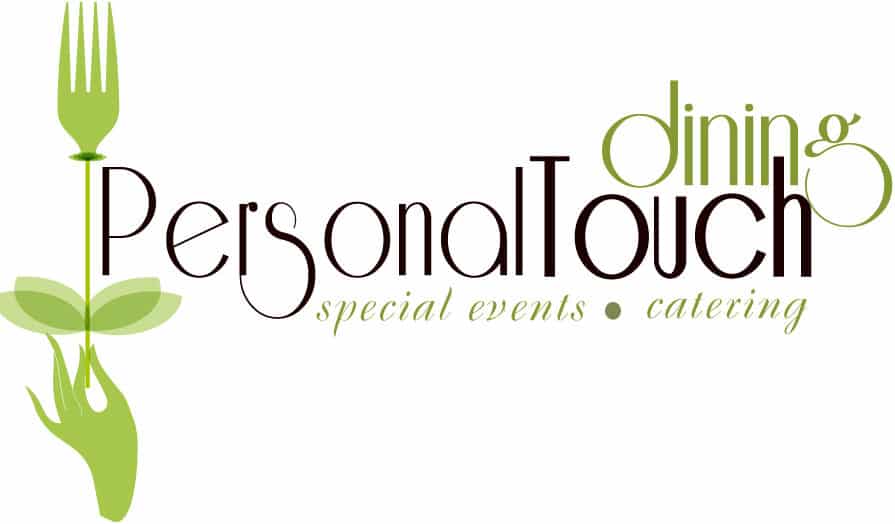
Professional Garnishing and Food Presentation Tips
Especially over the last decade, food presentation is crucial to marketing your product and services to the public. Between Instagram, Yelp, and other social media sites, clients are obviously drawn into an establishment by how the food looks. The science behind food presentation goes beyond just attracting customers. Studies from Oxford have shown quality food presentations enhance the taste and overall mindset of the customer! A well-thought-out food presentation stimulates appetites before the first bite and uses ingredient arrangement to harmonize flavor and textural complexity.
Even world-renowned culinary masters will tell you; you don’t need to be an artist to present your food like a professional. We’ve gathered our chefs and hounded them for their secrets of the trade. Check out their tips and tricks for the perfect plating presentation!

True Photography
Plate Like The Pros!
From what we’ve gathered, the rules of plate presentation are that there are no fixed rules. However, there are several time-tested guidelines to consider.
- Remember, your plate is your canvas. (Dig deep for that artist’s flair and unleash what comes to mind!)
- Arrange food items using the rule of thirds . (Studies have shown that sectioning items into thirds will create the most pleasing arrangement to the human eye.)
- Entice the eyes with visual stimulants. (We’re not much better than birds, honestly. Think bright colors and shiny accents!)
- Use the sauce as paint for your plate. (Bring your brush strokes to the plate! Cooking utensils offer a wide variety of textures and painting possibilities.)
- Garnish to enhance both appearance and flavor. (Sauces in vibrant colors and delicious flavors can tie a whole meal together.)

Food Arrangement Techniques
- The Rule of Thirds – This is such a fascinating topic; we had to expand our description! This theory applies to videography, photography, and even fashion. Wherever you find a profession that relies on visually appealing to the masses, The Rule of Thirds comes into play. Humans seem to be naturally drawn to a grid pattern, much like a tic-tac-toe frame. The rule suggests that you place your subject along one of the four lines, or ideally at one of the four intersection points. When applied to cooking, the rule of thirds prescribes placing the focal point of your dish to either the left or right side of the plate rather than the center. Use white space by thinking of the rim as your frame and highlight your plate’s focal points.
- View Your Plate as a Clock – This option offers a complement to The Rule of Thirds. As you plate your ingredients, picture the face of a clock. From the diner’s point of view, your protein should be between 3 and 9, your starch or carbohydrate from 9 to 12, and your vegetable from 12 to 3.
- Don’t Overcrowd Your Plate – Often, when getting carried away by the presentation, artistic creativity can overshadow the main focus of the plate. Keep your design simple. Focus on the featured ingredient so that ingredient becomes what your customers will notice first. Having this focal point then helps arrange your accompanying items in a complimentary way.
- Moist Ingredients First – Plate moist ingredients first and prevent them from running by placing other foods on top. This pro tip comes from years of experience experimenting with speedy arrangements. For example, you can angle sliced meat against mashed potatoes, but trying it the other way around tends to look sloppy.
- Plan Flavorful Bites – Flavor bites are forkfuls of food that combine all the ingredients in your dish into one perfect bite. These are essential to quality plating as you show forethought in attempting to please your guests.
- Blend Textures – Contrasting a smooth vegetable puree with crunchy onion straws or topping a steak with crumbled blue cheese yields appealing texture combinations that are a staple in high-end cuisine.

Garnishing Tips
Now the main entree and sides are plated up; what will be your cherry on top? In the past, chefs casually threw a piece of kale and an orange slice onto every plate. However, these garnishes added nothing to the dish, and few guests ate them only to be disappointed. Modern garnishes are painstakingly selected to pair with the meal. The end goal is always that chase for that perfect flavor bite. Follow these garnishing techniques and guidelines to master the last step of food presentation.
- Edible Garnishes – As you finish plating, remember that anything you put on the plate should be edible and complement the dish. To determine whether a garnish belongs, ask yourself whether you would want it consumed in the same bite as the meal it accompanies.
- Intentional Placement – Never heap garnishes in one corner of the plate. Instead, disperse them thoughtfully to add color or texture throughout. For example, place crispy carrot shoestrings atop a delicate fish filet that has been nested in a curry sauce, then decorate the plate with pomegranate seeds. These colors and textures all work together to give the dish a broad range of delights for the eyes and mouth.
- Less Is More – If there were one strict rule to this process, it’d be this: Never clutter your plate for the sake of a garnish. If your plate is full, opt for a drizzle of flavor-infused vinegar or oil to enhance the taste and appearance of your dish without overcrowding your plate.
- Garnishes to Avoid – Avoid using unappetizing garnishes like raw herbs, large chunks of citrus, and anything with a strong odor. These would overpower anything else in your flavor bite and ruin the dish for your guests. Also, for speedy service, try to avoid garnishes that take a long time to apply.

- Venue Referrals
- 9605 Kearny Villa Road, San Diego, CA 92126
- [email protected]
© 2024. Personal Touch Dining. All rights reserved.

How to garnish dishes?
In this article:
Garnishing dishes: Elevating your food presentation
Adding a garnish to your dishes is like putting the final touches on a masterpiece. It not only enhances the visual appeal of your food but also adds flavor and texture. Whether you’re a seasoned chef or a home cook looking to up your game, learning how to garnish dishes effectively can take your cooking to the next level.
Do you like this article? Yes No
Thank you! Please keep reading.
Garnishing dishes involves adding complementary elements to your food presentation to enhance its visual appeal, flavor, and texture. Here are some tips on how to garnish dishes effectively:
1. Choose the right garnish: Consider the flavor profile of your dish and choose a garnish that complements it. For example, citrus zest can brighten up seafood dishes, while fresh herbs can add a pop of color and freshness to salads.
2. Keep it simple: A garnish should enhance the dish, not overpower it. Stick to one or two garnishes to avoid overwhelming the palate.
3. Use contrasting colors and textures: Play with different colors and textures to create visual interest. For example, you can sprinkle chopped nuts on a creamy dessert or add a drizzle of vibrant sauce to a savory dish.
4. Think about placement: Garnishes should be strategically placed to draw the eye to certain elements of the dish. For example, placing a sprig of rosemary on top of a grilled steak can highlight the smoky flavors.
5. Experiment with different techniques: Don’t be afraid to get creative with your garnishes. Try using edible flowers, microgreens, or even molecular gastronomy techniques to add a modern twist to your dishes.
6. Consider the occasion: Tailor your garnishes to the occasion. For a casual meal, simple garnishes like chopped parsley or a sprinkle of paprika may suffice, while for a special occasion, you can go all out with intricate edible decorations.
7. Practice makes perfect: Like any culinary skill, mastering the art of garnishing takes practice. Keep experimenting with different garnishes and techniques to find what works best for your dishes.
8. Be mindful of allergies and dietary restrictions: When garnishing dishes, make sure to consider any dietary restrictions or allergies your guests may have. Be prepared to offer alternative garnishes or omit them altogether if necessary.
9. Use garnishes to tell a story: Garnishes can also be used to tell a story about the dish or the ingredients used. For example, using edible flowers from your garden can showcase your commitment to using fresh, locally sourced produce.
10. Fresh is best: Whenever possible, opt for fresh garnishes over dried or pre-packaged ones. Not only do fresh garnishes have better flavor and texture, but they also add a touch of elegance to your dishes.
11. Garnishing desserts: When garnishing desserts, consider using sweet elements like chocolate shavings, fruit coulis, or whipped cream to add a touch of sweetness and decadence.
12. Embrace simplicity: Sometimes, less is more when it comes to garnishing dishes. A simple sprinkle of sea salt or a drizzle of high-quality olive oil can be all you need to elevate a dish to restaurant-quality standards.
In conclusion, mastering the art of garnishing dishes can take your cooking to the next level by enhancing the visual appeal, flavor, and texture of your food. By following these tips and experimenting with different garnishes and techniques, you can elevate your dishes from ordinary to extraordinary.
Watch this awesome video to spice up your cooking!
- Can shrimp be refrozen?
- Where to watch American Pie movies?
- Can you use whipping cream in macaroni and cheese?
- How to cook artichoke in an Instant Pot?
- How many carbs in angel hair pasta?
- How to make hummus without food processor?
- How big is 16 inch pizza?
- What fruits make your vag wetter?
About Melissa T. Jackson
Melissa loves nothing more than a good dinner party and spends weeks intricately planning her next 'event.' The food must be delicious, the wine and cocktails must be the perfect match, and the decor has to impress without being over the top. It's a wonder that she gets any time to write about her culinary adventures. She particularly loves all types of fusion cooking, mixing the best of different food cultures to make interesting and unique dishes. Melissa lives in New York with her boyfriend Joe and their poodle, Princess.
Leave a Comment Cancel reply

IMAGES
VIDEO
COMMENTS
Follow these garnishing techniques and guidelines to master the last step of food presentation. Edible Garnishes - As you finish plating, remember that garnishes should always be edible and enhance the dish.
Professional chef reveals food presentation pro tips. This guide shares creative strategies for visually stunning culinary showpieces that delight customers.
Personal chefs are masters in the art of plating and garnishing, using creative techniques to transform a meal into a visually stunning masterpiece. In this blog post, we’ll dive into the fundamentals of food presentation and explore how a personal chef’s expertise can elevate your dining experience. 1.
The art of food presentation goes way beyond garnishing. It's a visual way to introduce the meal's culinary story and give the diners a glimpse of the flavor that awaits them. If you've ever heard the phrase “one eats with his eyes first”, in the culinary world, this statement is unequivocally true.
Whether you're a seasoned chef, a restaurant owner, or an enthusiastic home cook, mastering the art of garnishing can significantly elevate your culinary creations. This comprehensive guide explores various types of garnishes, techniques, and tips to help you garnish your dishes like a pro.
Adding a garnish to your plate can be a complete game-changer. However, you must be careful and strategic when using them. Some cooks tend to overdo it with garnishes.
We talked to chefs Daniel England, Joyce Tang, Tanner Agar, Jim Solomon, Michael Welch, and Brian Poe to learn their favourite food plating and presentation techniques. Each technique focuses on five key food presentation factors: colour, arrangement, balance, texture, and how easy it is for guests to eat.
A well-thought-out food presentation stimulates appetites before the first bite and uses ingredient arrangement to harmonize flavor and textural complexity. Even world-renowned culinary masters will tell you; you don’t need to be an artist to present your food like a professional.
Garnishing dishes involves adding complementary elements to your food presentation to enhance its visual appeal, flavor, and texture. Here are some tips on how to garnish dishes effectively: 1. Choose the right garnish: Consider the flavor profile of your dish and choose a garnish that complements it.
2019-07-16. 12 minute read. Share Post. Do food presentation and plating techniques actually matter? In short, yes. The way you present your food is what tempts customers to try a dish. We eat with our senses: what we see, smell, and feel.